
Anna grows stunning cup-and-saucer vines every year—“I praise them generously every day”
Every spring, Anna Kojonen plants cup-and-saucer vine seedlings against the wall of an old log villa. Over the summer, they climb up to the six-meter-high ceiling, creating a fairytale-like atmosphere on the terrace. They look stunning even in November.
What makes the cup-and-saucer vine so captivating?
“I really love its rapid growth and delicate nature, not to mention its resilience in the fall. Even small snowstorms can’t discourage this beauty (see photos at the end of this article). I’ve had cup-and-saucer vines for years.
This fast-growing vine is perfect for our outdoor living space, as the terrace ceiling is about six meters high and the flower bed along the wall is eight meters long. Something small wouldn’t make much impact here.
Our guests have been absolutely thrilled by these vines, too.
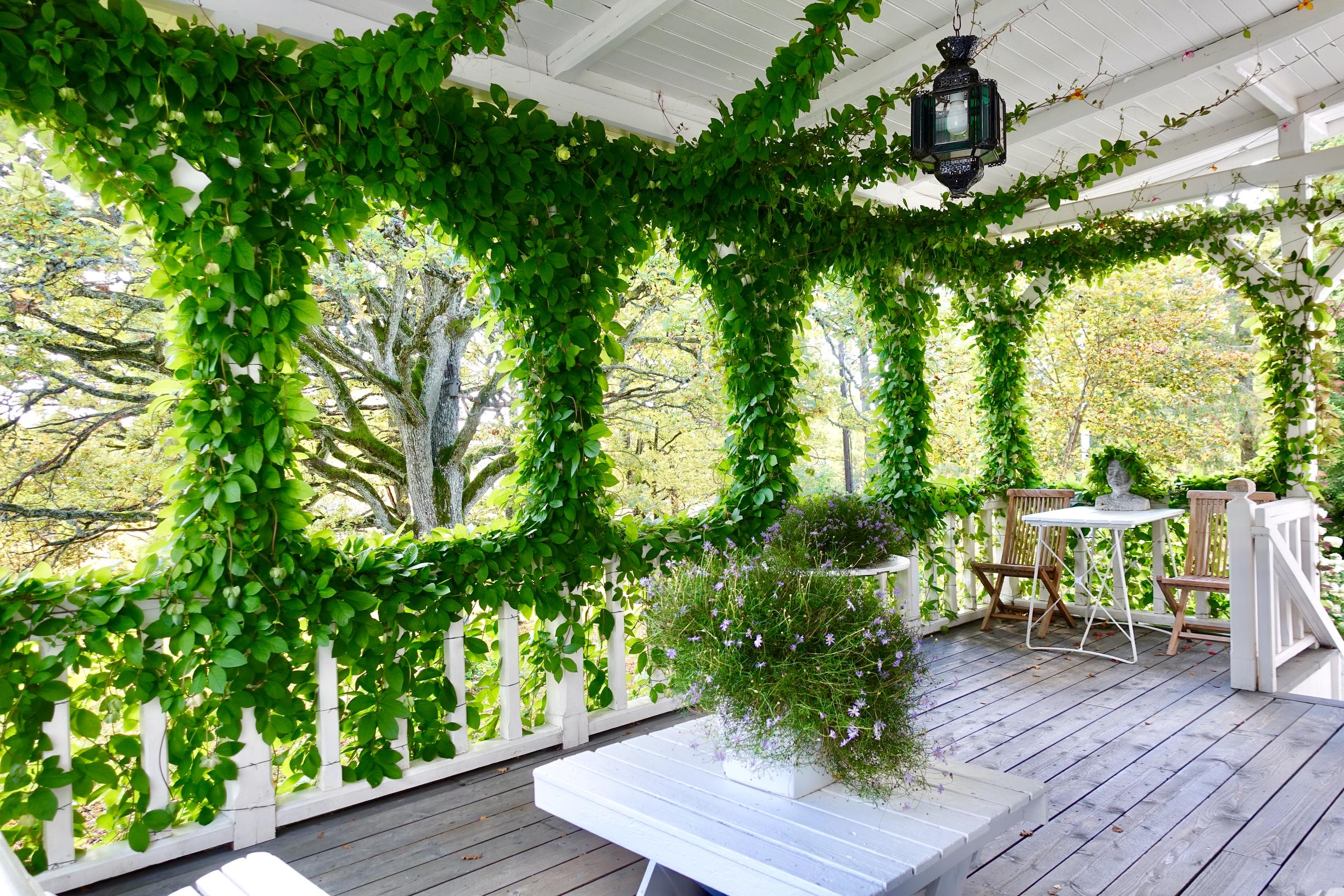
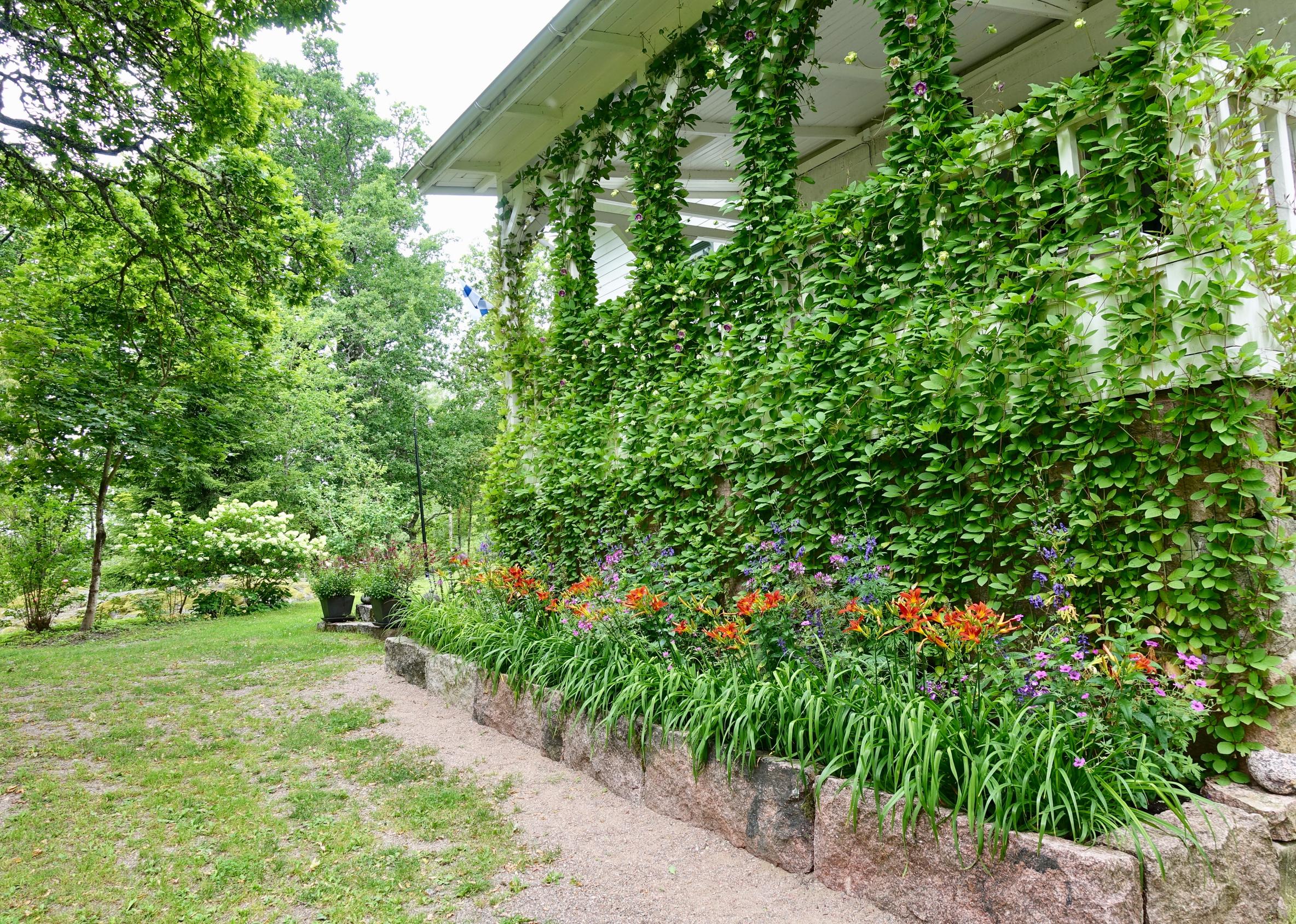
How many seedlings fit into the bed?
“This year, I planted 30 seedlings. Each pot I buy has three seedlings, so I bought 10 in total (€13.50 each). I don’t separate them; I just plant the whole pot as is, which leads to a more abundant display. I’ve always received top-quality seedlings from that nursery, and I’ve never grown them from seed myself.
I always fill the bed completely, adding summer flowers and perennials. I love a lush, eclectic mix.”
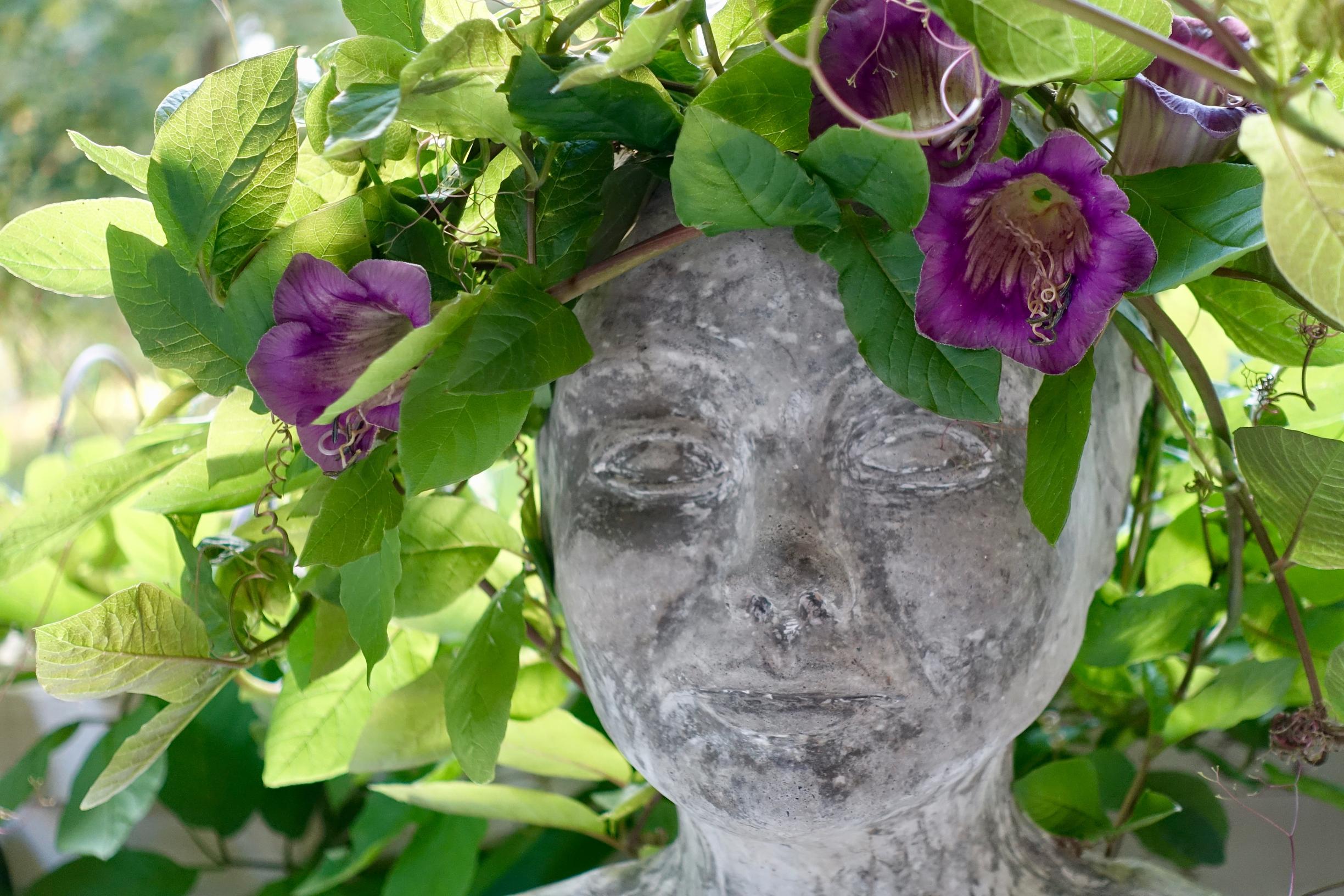
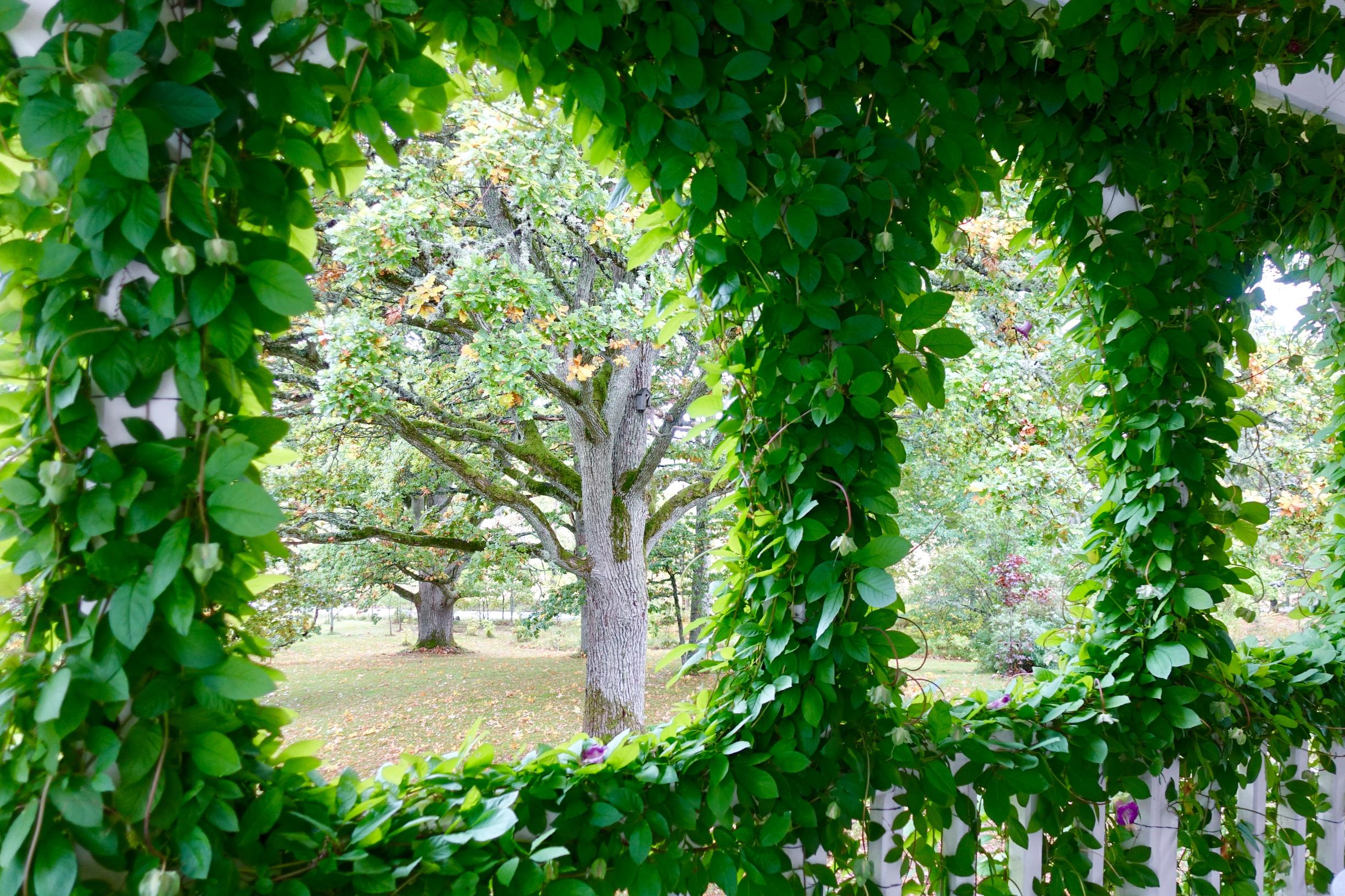
When do you plant the vines, and when are they at their best?
“Normally, I plant them at the end of May, but this year was different because it was so warm. Growth took off quickly. The vines are at their most beautiful from July–August onward. I’ve never counted the blossoms, but there are hundreds.”
Is the location sunny? How do you care for the vines?
“The terrace faces south, and our large oaks provide great shade from too much sun.
I fertilize once a week and water thoroughly. The terrace roof sticks out enough that rain alone isn’t enough.
They grow so tall that I had to string up old Christmas lights on the terrace ceiling and wind the vines around them.”
Is there a major secret to growing them?
“Every year, I buy big, sturdy seedlings, water and fertilize them, guide and tie them up, and praise them generously every day. That’s all it takes—nothing else is needed.”
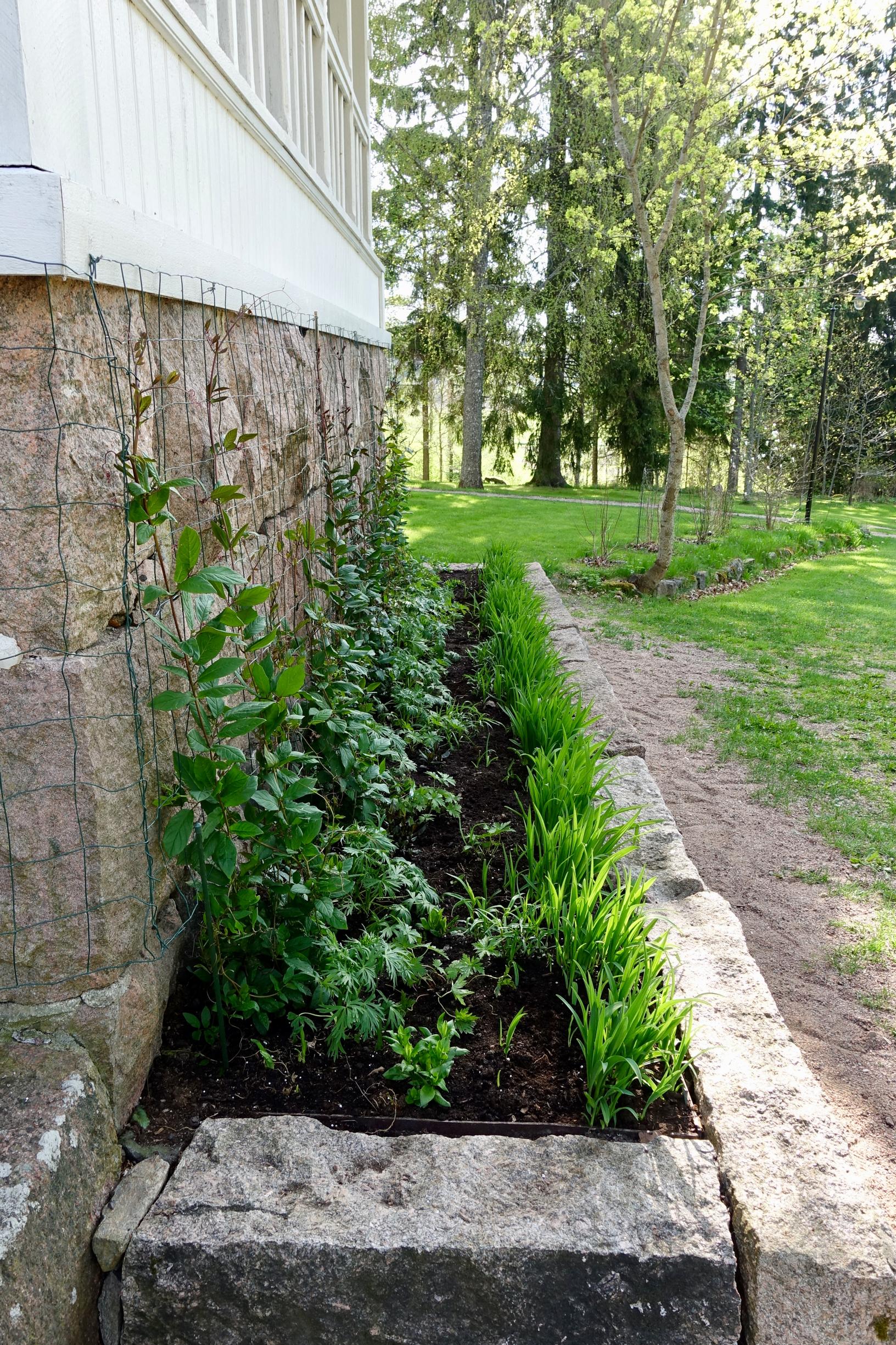
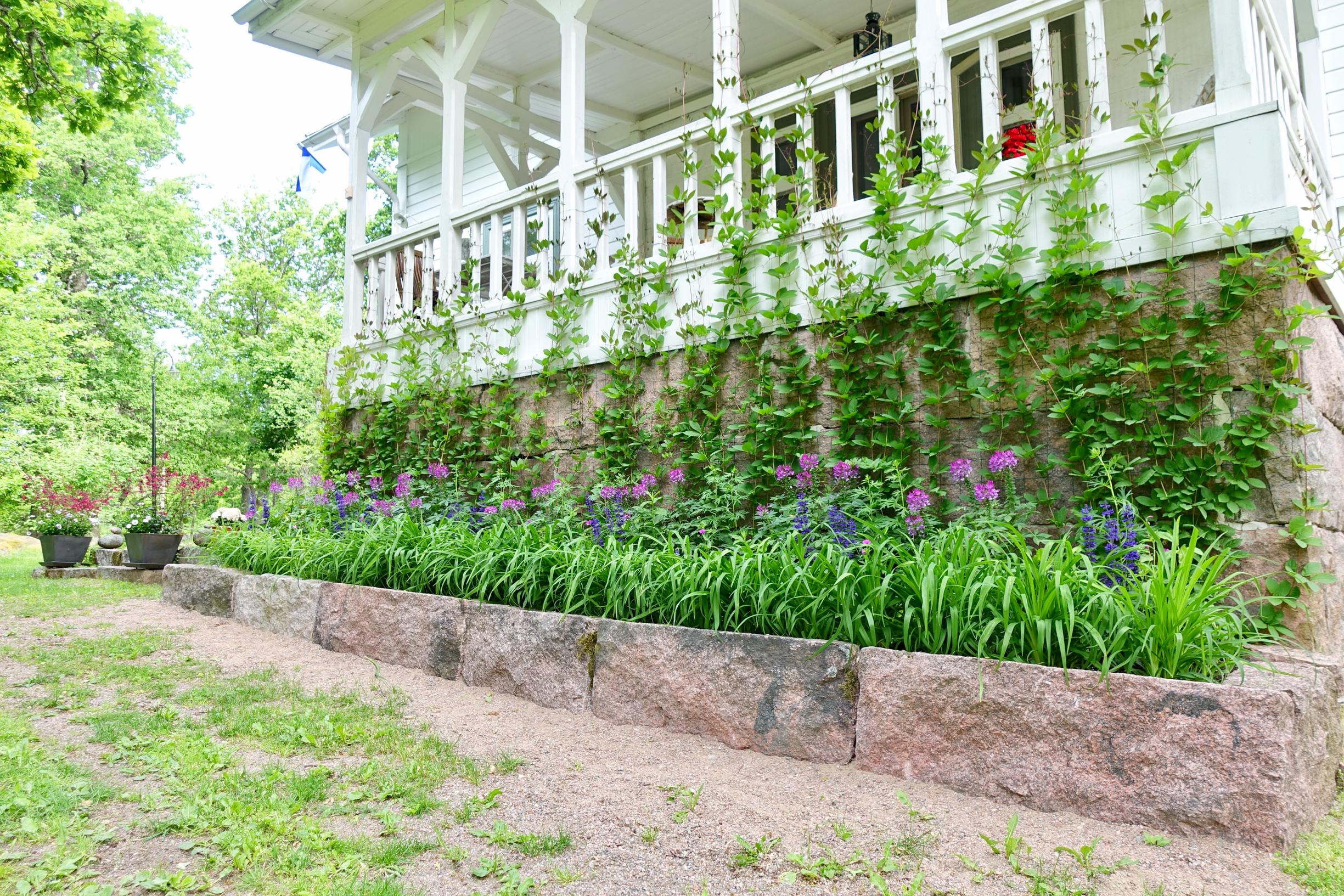
When do you take the vines down? Do they leave any traces on the railings?
“I cut them down and lay them over the bed to protect the perennials once the vines freeze. Last year, that happened on December 10. In spring, I remove them from the bed.
They haven’t caused any problems. Our house is white, so I wash the terrace railings in the fall if it’s not freezing, or at the latest in spring.”
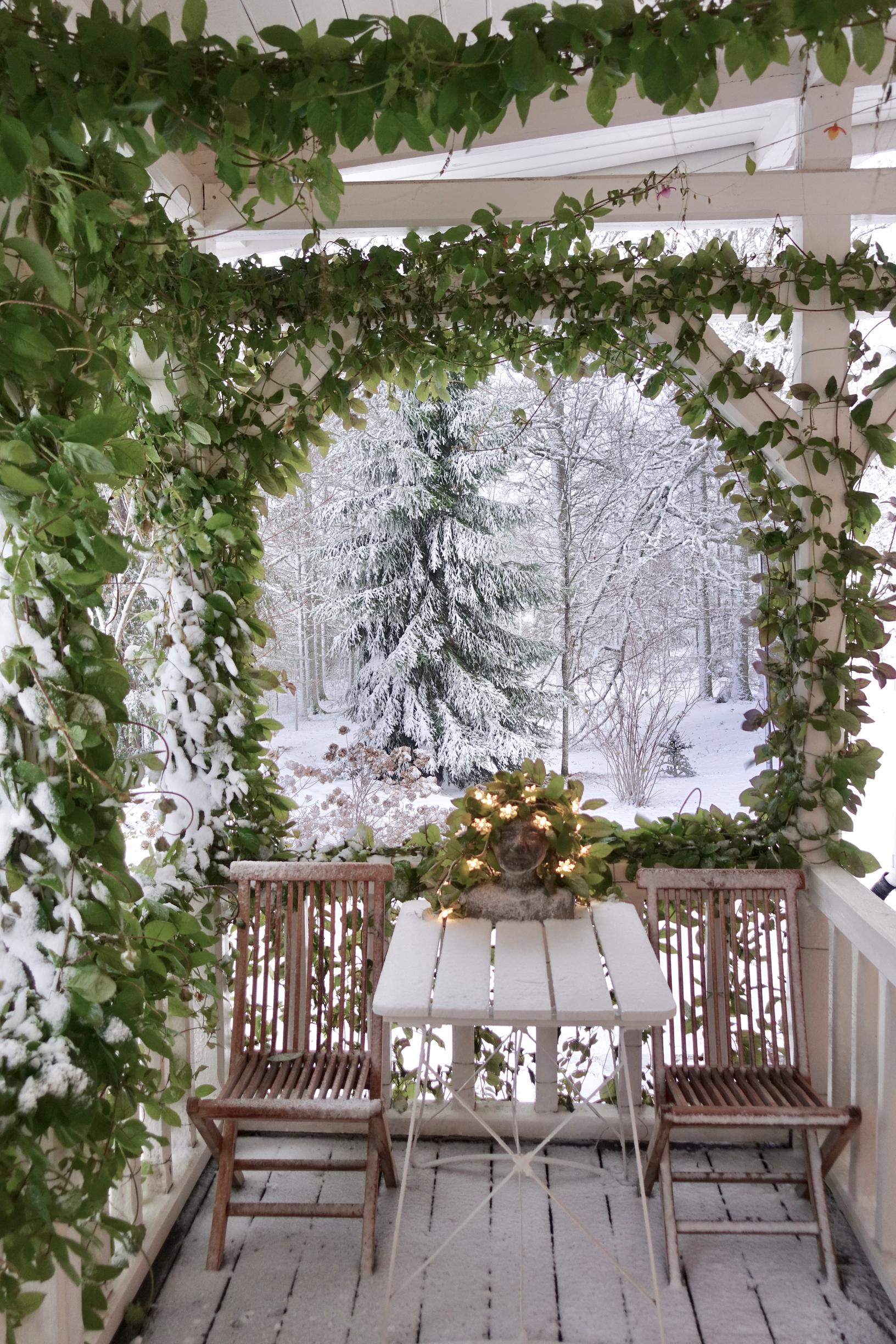
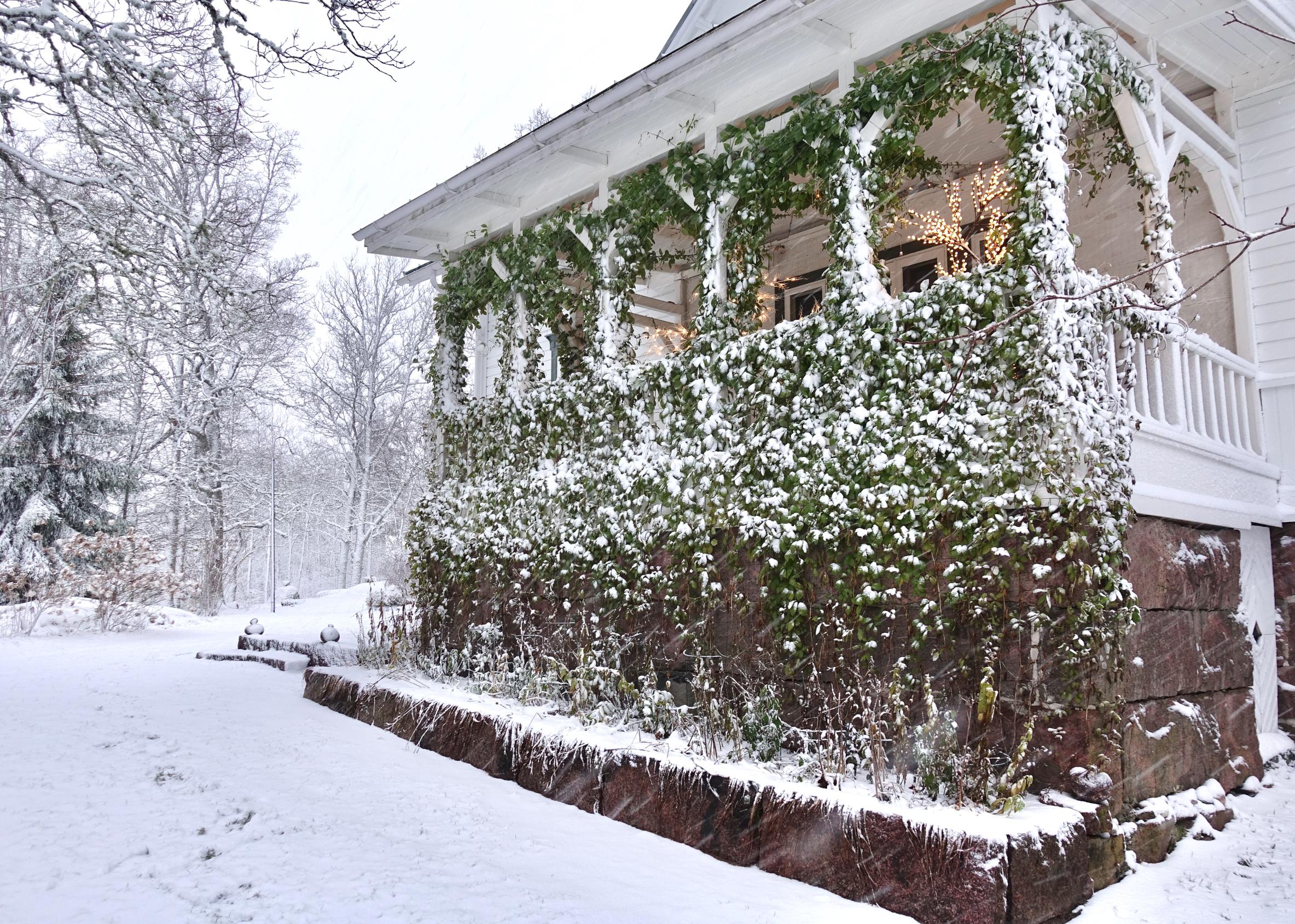
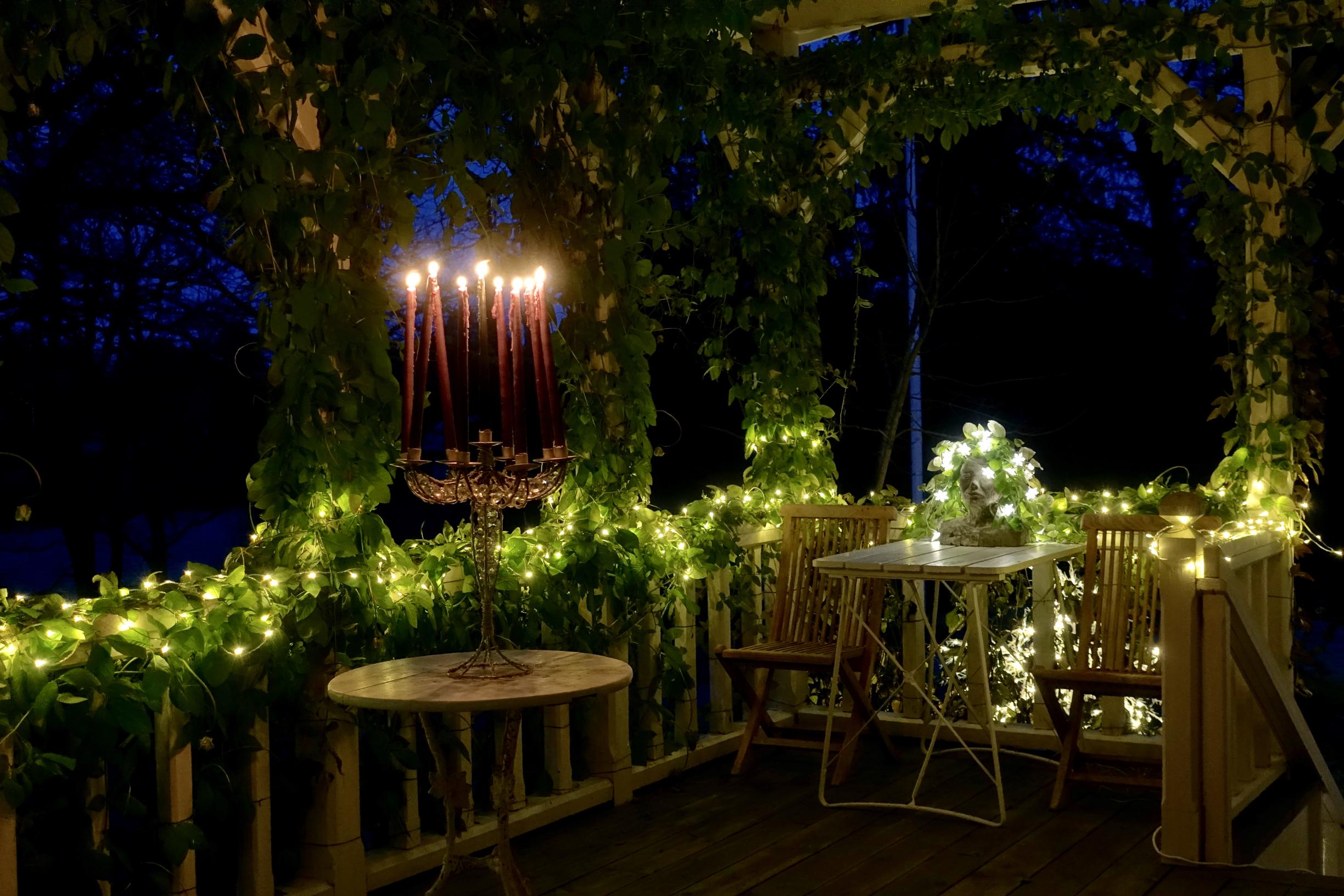
What is the rest of your yard like? Do you have any other favorite plants?
“We have a huge, park-like yard adorned by old oaks. Most of it is lawn. In the same bed as the cup-and-saucer vines, I have fiery orange-red daylilies, various cranesbills, ornamental sages, monkshood, and phlox. This year, I also planted black-eyed Susans to climb between the vines. Last year, spider flowers lit up the space in front of them.
“My favorite in the garden is the Crataegus x mordenensis ’Toba’, which is bursting with blooms right now.
“I’m enjoying my retirement in these lovely surroundings.”
Photos for this story: Anna Kojonen


